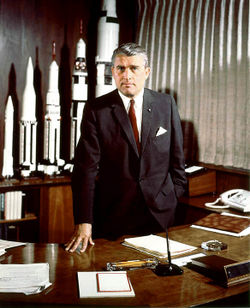The US was actually capable of launching a satellite before the USSR launched Sputnik 1 on October 5, 1957.
On September 20, 1956, the Jupiter C rocket, developed by the Army Ballistic Missile Agency, was first launched. It reached an altitude of 682 miles and could have put its fourth stage into orbit. However, the fourth stage was ordered to be filled with ballast instead of fuel to prevent it from accidentally being shot into orbit.
The reason for this came from President Eisenhower's desire that satellite research have no military implications. He was seeking to reassure the world that, despite the conflicts of the Cold War, the US was committed to maintaining peace. He was worried that the world would view the launch of a satellite as a demonstration of the United States' military might, so he determined that if the United States launched a satellite, it would have a purely scientific, nonmilitaristic value. Warner von Braun was already developing the Jupiter rockets to launch a satellite into space, but because the Jupiter program was also part of a weapons development project for the U.S. Army, and because von Braun already had the reputation of being the designer of the V-2 missile used by Nazi Germany, Eisenhower gave the responsibility of launching a satellite to the Naval Research Laboratory in 1955. The new project was called Project Vanguard, and even though von Braun's team was technologically capable of launching a satellite in 1956, it was not allowed to do so before Project Vanguard could.
Warner van Braun complained that this policy guaranteed that the Soviet Union would be the first nation to launch an artificial satellite, but at a press conference, Charles Wilson, Eisenhower's Secretary of Defense remarked, "I wouldn't care if they did." This statement demonstrates that the United States was not initially interested in entering into a space race with the USSR.
